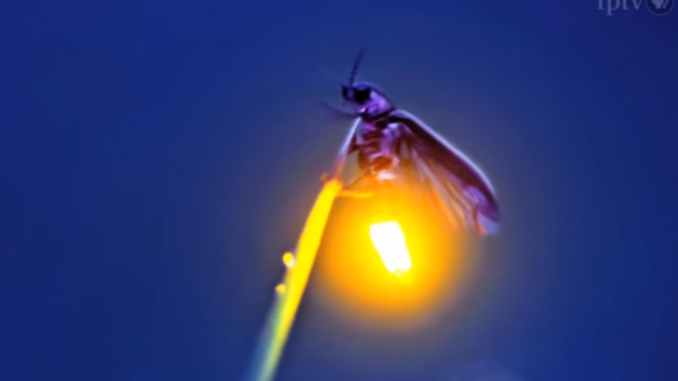
Watching the floating lights of fireflies wander about at night in the woods or in a clearing, it’s easy to imagine how ancient humans enjoyed telling and hearing stories about ‘forest fairies’ and the mischief they would get up to by the light of their tiny lanterns. Storytelling was one of the few ways our ancestors had to deal with the unknown. While many tales of shenanigans, daring, and romance have been spun around the fire for countless generations, it seems unlikely that any of our imaginative yarn-spinning ancestors dreamed that the forest fairies had ‘musical armor’ to protect them from a nocturnal predator of the forest.
Today we know a great deal about the forest fairies, first and foremost of which is they are not fairies at all but tiny flying beetles we call fireflies or lightning bugs. Further, the bright light they emit is generated by a chemical reaction we call bioluminescence that their incredible little bodies produce. The light sends a signal to other fireflies, communicating species, gender, and location, all of which is crucially important in the Lampyridae mating game. There are something like 2,000 species of lightning bugs worldwide, with 150-200 species in the United States. Thus, if you’re a firefly interested in mating and starting a family, the ability to broadcast your species and your availability is paramount.
The downside of this prolific after-dark advertising is that there are other species out and about at night looking for a meal. Humans have known for sometime that Lampyridae long ago developed a defense to discourage predators: they taste bad, and are actually poisonous for many predators. With this knowledge in hand, scientists believe predators quickly learn to associate the flashing light with the really bad taste. Problem solved, right? Well, not every predator sees well, and some bats are… ahem… as blind as a bat.
Fast forward to present-day Vietnam, where researchers from Tel Aviv University and the Vietnam Academy of Science and Technology were in the jungle to collect audio of the high frequency sounds that bats make. They were surprised to also find high frequency sounds near the range of bat sonar, but made by some other creature. They discovered and confirmed the sounds were produced by the flapping wings of four different species of lightning bugs in that locality alone. The study concluded that these species of Lampyridae developed this active warning system to communicate to bats that a bad taste was in store for them, just as the flashing light communicated a warning to predators who can see well in the dark. Effectively, the audio warning is musical armor that protects the firefly against attack and consumption by bats. It’s not known how many other species of fireflies the world over possess this musical armor.
“Fireflies in Iowa” (total time 6:21, but cued to start at the 1:50 mark):
Question Of The Night: Describe yourself in terms of indoors or outdoors? Night or day?
